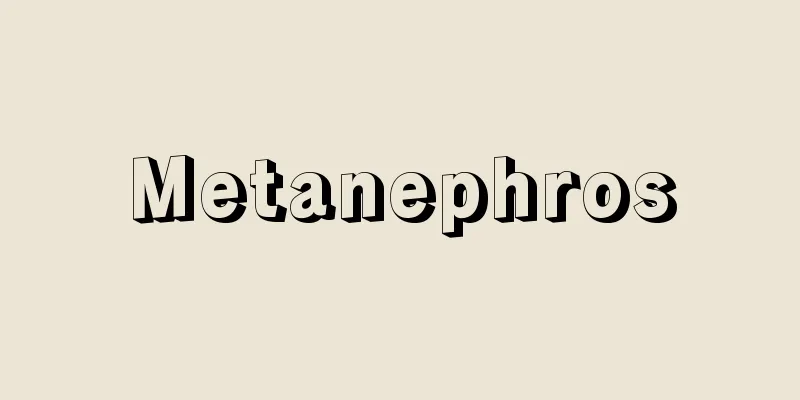Central Asia

|
In a broad sense, it refers to the area in the center of the Eurasian continent, from the Gobi Desert to the Caspian Sea, and sometimes includes parts of Western Asia, but in a narrow sense, it refers to the area known as Turkestan. Politically, it is centered on the five former Soviet republics (Kazakhstan, Turkmenistan, Uzbekistan, Tajikistan, and Kyrgyzstan) and China's Xinjiang Uyghur Autonomous Region, and extends over Afghanistan and Mongolia. It is divided into two parts, east and west, by the Pamir Plateau in the center, and in the east there are the Sayan Mountains, the Tian Shan Mountains, and the Kunlun Mountains, with basins such as the Tarim Basin in between. In the west, the Turan Depression spreads. There are considerable differences in topography between the east and west, but generally there are many inland rivers and salt lakes. The climate is continental and dry. The population is small considering its vast area. The ethnic groups are complex, but the majority are Turkic Muslims. Since ancient times, it has been a key location for East-West transportation, and the Silk Road passed through it, making it a stage for nomadic peoples, including Mongolia. It has formed a common historical and cultural sphere since the 10th century, and since the 18th century it has been dominated by two major powers, Russia and the Qing. The surveys and explorations by A. Stein, S. Hedin, and others who unearthed the hidden culture of this region are well known. The five Central Asian countries of the former Soviet Union were divided by artificial borders created by the ethnic demarcation in 1924, and as a result, ethnic groups have been divided or integrated (for example, Bukhara and Samarkand, which are overwhelmingly Tajik, were incorporated into Uzbekistan), and many foreign ethnic groups, including Russians, have settled there, making it a complex ethnic composition. Furthermore, in addition to the distortions caused by agricultural collectivization and nomadic settlement policies since the Soviet era, the weak economic independence symbolized by the cotton monoculture industrial structure is also a challenge that each republic must overcome once again today, as they have become independent. Meanwhile, the situation is similar in East Turkestan, which is now part of China's Xinjiang Uighur Autonomous Region, where large-scale settlement by Han Chinese has been observed and Turkestan nationalism is on the rise following the independence of the former Soviet Central Asian countries. → Related topics Asia Source : Heibonsha Encyclopedia About MyPedia Information |
|
広義にはユーラシア大陸中央部,ゴビ砂漠からカスピ海に至る地域をさし,さらに西アジアの一部も含めることもあるが,狭義には,トルキスタンと呼ばれる地域をさす。政治上は,旧ソ連の5共和国(カザフスタン,トルクメニスタン,ウズベキスタン,タジキスタン,キルギス)と中国の新疆(しんきょう)ウイグル自治区を中核として,アフガニスタン,モンゴルなどにまたがる。中央のパミール高原で東西に2分され,東部はサヤン山地,天山山脈,崑崙(こんろん)山脈があり,その間にタリム盆地などの盆地がある。西部はトゥラン低地が広がる。東西で地形上はかなりの相違があるが,一般に内陸河川,塩湖が多い。気候は大陸性で,乾燥。広大な面積のわりに人口は少ない。民族は複雑であるが,トルコ系イスラム教徒が多い。古来東西交通の要地でシルクロードが貫通,モンゴルをはじめ,遊牧民族の活躍の舞台であった。10世紀ころから共通の歴史・文化圏を形成しており,18世紀以降はロシアと清の二大勢力によって支配された。この地域の埋もれた文化を発掘したA.スタイン,S.ヘディンらの調査,探検は著名。 旧ソ連の中央アジア5国は1924年の民族的境界画定による人為的国境で区切られたため,民族集団が分断あるいは統合されたりしており(例えばタジク人の圧倒的に多いブハラやサマルカンドをウズベキスタンに編入),またロシア人をはじめ外来の民族が多数定住するという複雑な民族構成をかかえている。さらにソ連時代以来,農業集団化や遊牧民定住化政策がもたらした歪みに加えて,綿作モノカルチャー的な産業構造に象徴される経済的自立性の弱さも,各共和国が独立した今日あらためて克服すべき課題となっている。一方,中国の新疆ウイグル自治区となっている東トルキスタンでも事情は似ており,漢族の大量入植も見られ,旧ソ連中央アジア諸国の独立にともなってトルキスタン・ナショナリズムの機運が高まっている。 →関連項目アジア 出典 株式会社平凡社百科事典マイペディアについて 情報 |
Recommend
Tribunal d'Instance (English)
… The judicial system is broadly divided into tho...
Utsukushigahara
This plateau is located in the Chikuma region, ea...
Castle lord - Jodai
From the Middle Ages to the early modern period, ...
Corona Australis (Southern Crown)
Its abbreviation is CrA. It is a southern constell...
Iranian Consortium
…As a result, international oil companies, mainly...
Drought (English spelling)
Originally, it was written as drought (雃 is the go...
Ariwara no Narihira - Ariwara no Narihira
A poet of the early Heian period. The fifth son o...
Chowa Kishimoto
Year of death: 17th October 1715 (12th November 17...
Ryo-oh
The name of a Gagaku piece. It is also called &qu...
Asian noodles - Ajiamen
… [Types and propagation] There are about 37 kind...
Plantagenet Dynasty
A British dynasty (1154-1399). Its founder was Hen...
Crypsinus yakushimensis (English spelling) Crypsinusyakushimensis
…[Shigeyuki Mitsuda]. … *Some of the terminology ...
Nagoya obi - Nagoya obi
A type of women's obi. Also called 9-sun Nago...
Parchment paper - Ryusanshi
A thin, translucent paper made by treating paper m...
Leontes
…the river flows through southern Lebanon. It is ...









